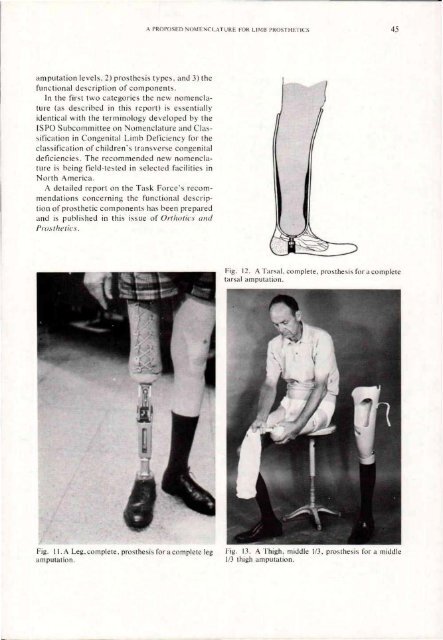Orthotics and Prosthetics
Orthotics and Prosthetics
Orthotics and Prosthetics
Create successful ePaper yourself
Turn your PDF publications into a flip-book with our unique Google optimized e-Paper software.
amputation levels. 2) prosthesis types, <strong>and</strong> 3) the<br />
functional description of components.<br />
In the first two categories the new nomenclature<br />
(as described in this report) is essentially<br />
identical with the terminology developed by the<br />
ISPO Subcommittee on Nomenclature <strong>and</strong> Classification<br />
in Congenital Limb Deficiency for the<br />
classification of children's transverse congenital<br />
deficiencies. The recommended new nomenclature<br />
is being field-tested in selected facilities in<br />
North America.<br />
A detailed report on the Task Force's recommendations<br />
concerning the functional description<br />
of prosthetic components has been prepared<br />
<strong>and</strong> is published in this issue of <strong>Orthotics</strong> <strong>and</strong><br />
<strong>Prosthetics</strong>.<br />
Fig. 12. A Tarsal, complete, prosthesis for a complete<br />
tarsal amputation.<br />
Fig. 11. A Leg, complete, prosthesis for a complete leg<br />
amputation.<br />
Fig. 13. A Thigh, middle 1/3, prosthesis for a middle<br />
1/3 thigh amputation.
















